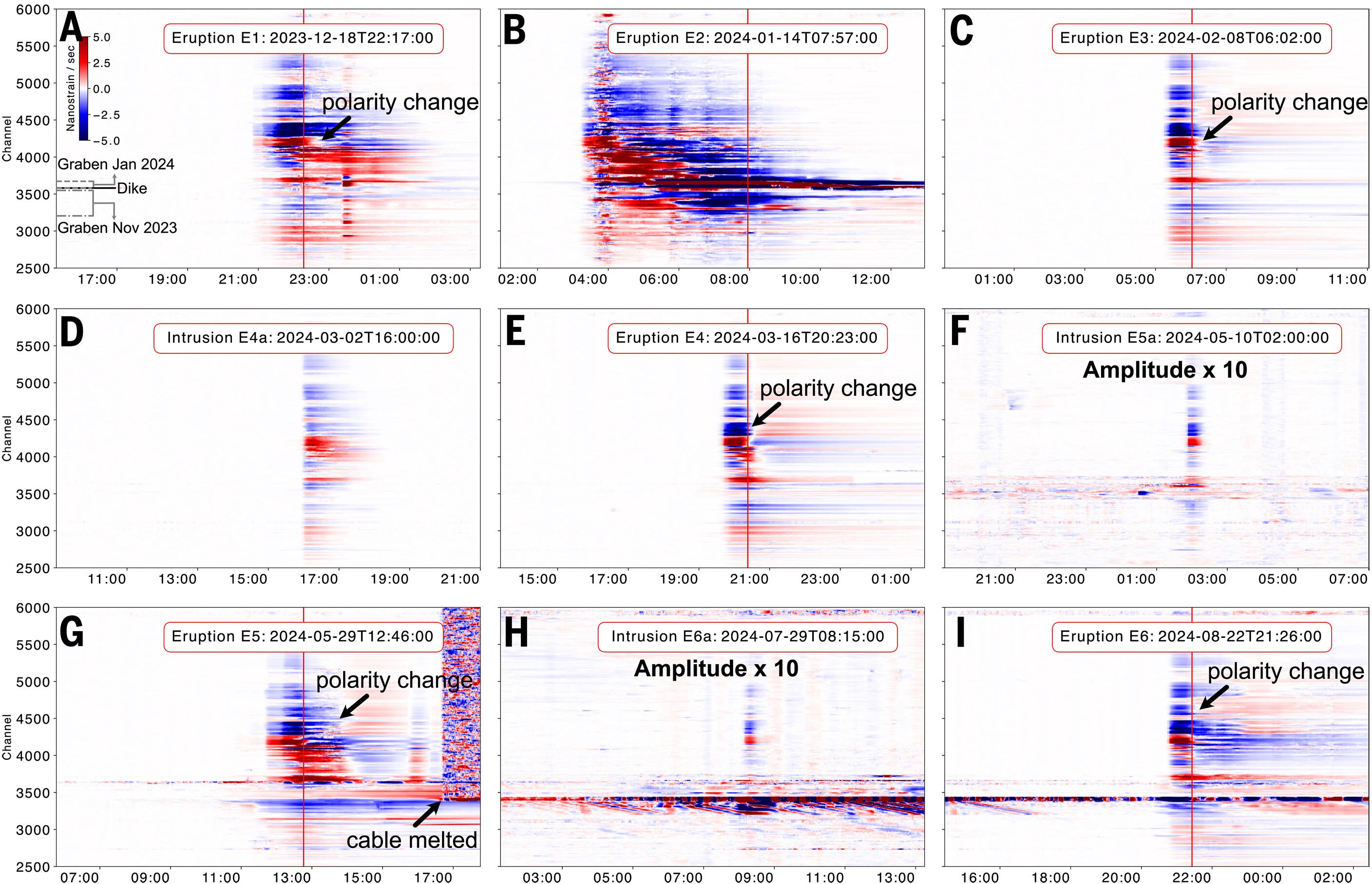利用光纤大地测量学研究冰岛反复发生的堤坝侵入的微小尺度动力学
IF 45.8
1区 综合性期刊
Q1 MULTIDISCIPLINARY SCIENCES
引用次数: 0
摘要
火山系统附近的连续大地测量可以成像岩浆运移动力学,但以高时空分辨率解决岩脉侵入仍然具有挑战性。我们引入了光纤大地测量学,利用低频分布式声学传感(LFDAS)记录沿着电信光缆,以一分钟的时间尺度跟踪冰岛Grindavík附近的堤岸入侵。LFDAS揭示了9次侵入事件中不同的应变响应,其中6次导致裂缝喷发。LFDAS应变的大地测量反演揭示了详细的岩浆侵入,推断脉脉体积率在每次喷发前15至22分钟系统地达到峰值。我们的研究结果证明了DAS作为密集应变仪阵列的潜力,可以实现地下准静态变形的高分辨率、近实时成像。在活火山地区,LFDAS记录可以为岩浆演化、喷发预测和危害评估提供重要的见解。本文章由计算机程序翻译,如有差异,请以英文原文为准。

Minute-scale dynamics of recurrent dike intrusions in Iceland with fiber-optic geodesy
Continuous geodetic measurements near volcanic systems can image magma transport dynamics, yet resolving dike intrusions with high spatiotemporal resolution remains challenging. We introduce fiber-optic geodesy, leveraging low-frequency distributed acoustic sensing (LFDAS) recordings along a telecommunication fiber-optic cable, to track dike intrusions near Grindavík, Iceland, on a minute timescale. LFDAS revealed distinct strain responses from nine intrusive events, six resulting in fissure eruptions. Geodetic inversion of LFDAS strain reveals detailed magmatic intrusions, with inferred dike volume rate peaking systematically 15 to 22 min before the onset of each eruption. Our results demonstrate DAS’s potential for a dense strainmeter array, enabling high-resolution, nearly real-time imaging of subsurface quasistatic deformations. In active volcanic regions, LFDAS recordings can offer critical insights into magmatic evolution, eruption forecasting, and hazard assessment.
求助全文
通过发布文献求助,成功后即可免费获取论文全文。
去求助
来源期刊

Science
综合性期刊-综合性期刊
CiteScore
61.10
自引率
0.90%
发文量
0
审稿时长
2.1 months
期刊介绍:
Science is a leading outlet for scientific news, commentary, and cutting-edge research. Through its print and online incarnations, Science reaches an estimated worldwide readership of more than one million. Science’s authorship is global too, and its articles consistently rank among the world's most cited research.
Science serves as a forum for discussion of important issues related to the advancement of science by publishing material on which a consensus has been reached as well as including the presentation of minority or conflicting points of view. Accordingly, all articles published in Science—including editorials, news and comment, and book reviews—are signed and reflect the individual views of the authors and not official points of view adopted by AAAS or the institutions with which the authors are affiliated.
Science seeks to publish those papers that are most influential in their fields or across fields and that will significantly advance scientific understanding. Selected papers should present novel and broadly important data, syntheses, or concepts. They should merit recognition by the wider scientific community and general public provided by publication in Science, beyond that provided by specialty journals. Science welcomes submissions from all fields of science and from any source. The editors are committed to the prompt evaluation and publication of submitted papers while upholding high standards that support reproducibility of published research. Science is published weekly; selected papers are published online ahead of print.
 求助内容:
求助内容: 应助结果提醒方式:
应助结果提醒方式:


